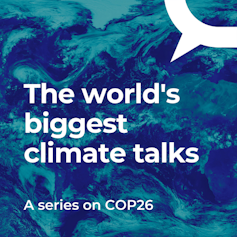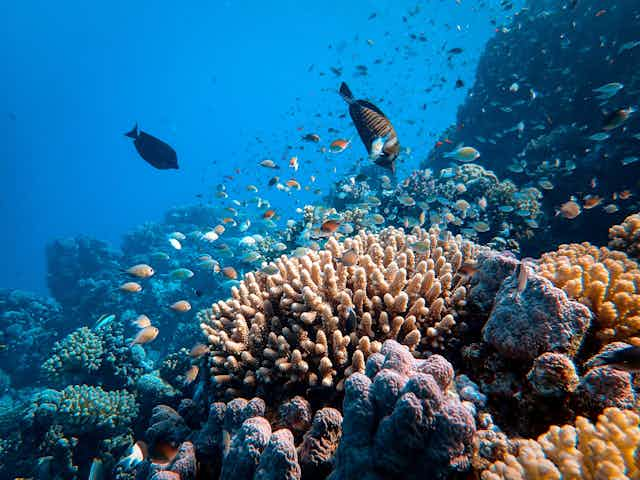A 2017 analysis by the World Resources Institute doubted the ability of Indonesia, the world’s largest archipelagic state, to meets its target to reduce emissions by 29% by 2030.
However, as a marine scientist, I strongly believe Indonesia’s rich coastal ecosystems, comprising mangroves, salt marshes and seagrasses, can help the country achieve this target.
Mangroves, salt marshes and seagrasses can capture carbon in both biomass and sediments. This capacity has been dubbed “blue carbon”, a term first coined in 2009.
Indonesia has around 31,894 square kilometres of mangroves and 30,000km² of seagrasses. These coastal ecosystems account for around 17% of the world’s blue carbon reservoir. The global estimate of carbon storage capacity for all coastal wetlands is 20 petagrams of carbon (Pg C), which equals 20 gigatonnes (Gt) carbon.
It is a huge resource that Indonesia can tap into. However, more research needs to be done to optimise these resources.
How vegetated coastal ecosystems store carbon
Blue carbon is one of the nature-based solutions that will not only save the planet’s climate but also bring about benefits for the ocean itself.
These shallow-water habitats provide essential spawning grounds, nursery grounds, feeding grounds and shelter for juveniles, as well as being home for many marine species.
Similar to trees or forests on land, vegetated marine and coastal ecosystems also absorb carbon dioxide for their photosynthesis process.
What makes them different is that the carbon stored in low-oxygen soil beneath will be preserved for millennia if left undisturbed. There is no fire threat underwater.

Although blue carbon ecosystems represent a much smaller area than terrestrial forests, their total contribution to long-term carbon sequestration is comparable to carbon sinks in terrestrial ecosytems.
Studies have shown blue carbon ecosystems are ten times more effective at sequestering carbon dioxide than terrestrial ecosystems. They also store carbon in their biomass and sediment for about twice as effective as tropical forest.
However, degradation of these ecosystems globally releases carbon back to the atmosphere.
For example, eutrophication – excessive nutrients in aquatic ecosystems – driven by coastal development in Cockburn Sound, Western Australia, caused the loss of 23km² of seagrass meadows from the 1960s to 1990s. This released 0.06-0.14 teragrams (equals to 0.14 megatonne) of CO₂ to the atmosphere over four decades.
In Indonesia, it is estimated about one million hectares (ha) of mangroves have been lost since 1800. Recent declines have mostly been due to causes such as clearing for unsustainable aquaculture and palm oil.
Mitigating the worst

To ensure Indonesia’s coastal ecosystem can function optimally to save the climate, a series of actions need to be carried out.
This includes implementing effective policies. This has started with the government’s low-carbon development initiative to ensure policies are in line with the emission reduction target in 2017.
In addition, the National Peatland and Mangrove Restoration Agency targeted 600,000ha of mangrove forest restoration over the next four years.
Indonesia has also started accounting for mangroves in its inventory of greenhouse gases. Yet it was only the above-ground part of this ecosystem that counted as carbon storage.
Work is needed to provide more data for below-ground and soil mangrove carbon capture capacity.
This depends on research collaborations. Research co-ordination between national institutions that are working in blue carbon assessment needs to be strengthened.
Another issue that collaboration can resolve is a lack of data about seagrass blue carbon.
Indonesia needs robust data for a national inventory of blue carbon to promote carbon storage and sequestration capacity of these ecosystems.
Research collaboration, sustainable aquaculture and raising awareness of the importance of blue carbon are essential for Indonesia to reach the emission reduction target in 2030. Raising awareness of the importance of blue carbon ecosystems will also help conserve carbon in these ecosystems.

This story is part of The Conversation’s coverage of COP26, the Glasgow climate conference, by experts from around the world.
Amid a rising tide of climate news and stories, The Conversation is here to clear the air and make sure you get information you can trust. Read more.

